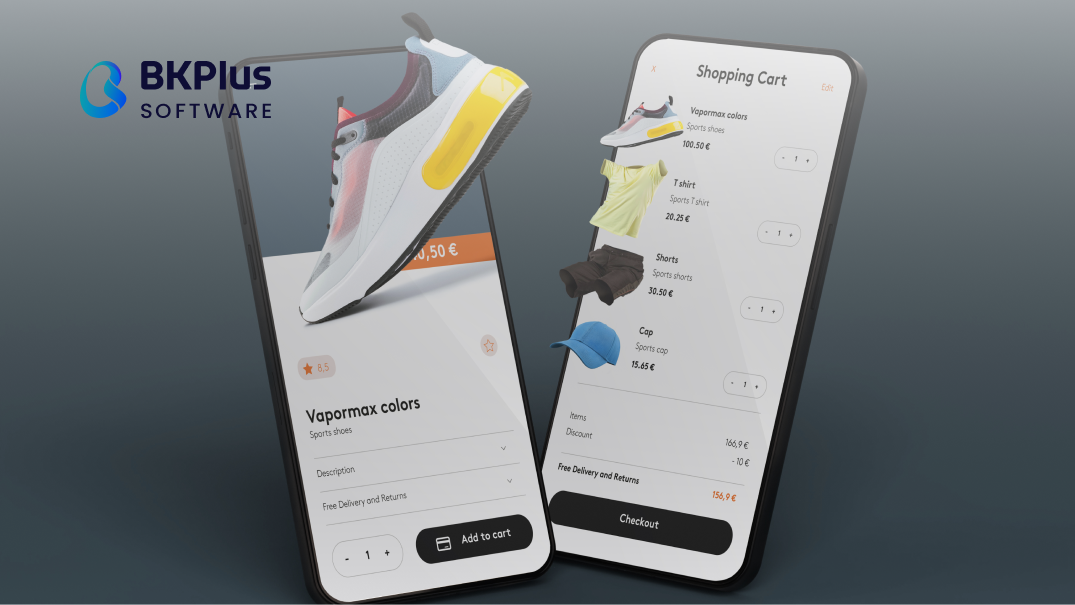As we step into the exciting realm of 2024, the mobile app landscape continues to evolve at an outstanding pace. Technological advancements, changing user behaviors, and innovative ideas are driving the mobile app industry to new heights. In this blog post, we’ll explore the 8 features of mobile commerce apps to boost your retail business. Let’s get started!
The Development of M-Commerce App
The mobile commerce landscape will continue to grow and innovate until 2024. More and more people are opting for the convenience of shopping via their smartphones. M-commerce apps will continue to evolve to meet the changing needs and expectations of consumers.
This is also thanks to the inclusion of AR, VR, and other mobile shopping technologies. With the help of AR features within the app, users can virtually try on products such as clothing, accessories and even furniture. Such features are in demand and their introduction into commercial apps is helping to drive new users to download the app.
M-commerce apps will also use AI algorithms to analyze user behavior, preferences, and purchase history to offer personalized product recommendations, discounts and promotions.
The 8 Must-have Features of a Mobile Commerce App
All M-commerce apps have eight core features in common, and implementing them is crucial if you want to achieve a smooth and seamless user experience. Let’s look at each of these features in detail.
Registration
It should be quick and intuitive – the less time it takes you to start shopping, the better. An effective solution is to allow users to authenticate themselves via their social media accounts. Remember, many stores do not force customers to log in until they have browsed the catalog and proceeded to checkout.

Catalog
The core area of your app. The main purpose of the catalog is to provide a clear product display. So make sure it has a logical structure with categories, subcategories, filters, and everything in between. Product cards in e-commerce apps should contain enough information about a particular product so that customers can make a balanced decision.
Product search
A keyword-based search system is the backbone of any mobile commerce app’s navigation system. It offers the easiest way to get to the desired product without having to struggle with filters or choosing the right category.
Shopping cart
There are no groundbreaking innovations here: Just make sure there’s an easy way to manage items, such as changing their quantity or deleting them altogether.

Feedback system
People always trust their senses more than eye-catching images and meaningful descriptions, and if they can’t check a product for themselves, they become suspicious. To overcome this fundamental obstacle, introduce a customer feedback system with ratings and reviews. Offer your customers the opportunity to read about other users’ positive experiences with this product and create trust in a simple way.
Checkout
Like everything else, it is extremely important to make this part of the user journey simple and intuitive: A bloated and complicated checkout with slow financial transactions will always lead to low conversion rates. If customers have decided to pay for a product, this should be as simple as possible. Offer multiple payment options and synchronize the payment details with the user profiles – this way, regular buyers can make their purchases even faster.
Order tracking
The money is gone, but the product hasn’t arrived yet. The final stage of the customer journey can be the most stressful because we humans have a natural aversion to ambiguity and unpredictable risks. The solution is to keep users sufficiently informed about the status and whereabouts of their orders – dedicate a separate screen for this purpose and link it to the data from the warehouses and GPS.
User profiles
These are data repositories that contain the payment data, addresses, contact information, and all other data required to use the mobile commerce application.
Conclusion
M-commerce has emerged as one of the most preferred sectors in the world in recent times. In this article, we have described the basic idea of an M-Commerce app.
If you want to build a mobile commerce app that supports both Android and iOS, you have to create two separate apps, which means more business hours. This, in turn, means more money. On the other hand, you can use cross-platform frameworks like React Native to cut some costs.
Do you have an idea for an M-commerce project? BKPlus Software would love to help you bring it to life. Our team will take your product through every stage of the mobile commerce app development process.



